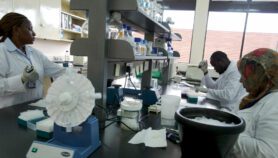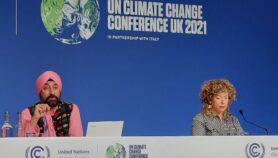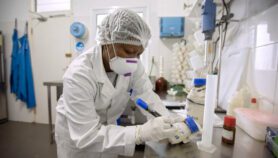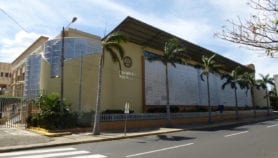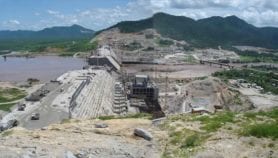Send to a friend
The details you provide on this page will not be used to send unsolicited email, and will not be sold to a 3rd party. See privacy policy.
The political climate is ripe for a new push to eliminate nuclear weapons; scientists can boost its chance of success.
Earlier this year, US satellites detected the first plume of steam from a nuclear reactor in Pakistan that has been built to produce fuel for nuclear bombs, confirming the country’s desire to strengthen its status as a nuclear power.
The observation — coming shortly before this month’s review conference in New York of the Nuclear Non-Proliferation Treaty (NPT) — is further evidence that the unregulated spread of nuclear technology remains closely linked to the dangers of nuclear conflict.
The good news is that US President Barack Obama seems determined to make eliminating nuclear weapons a top priority. Indeed, last month he invited 47 heads of state to an unprecedented summit in Washington to promote disarmament and agree strategies to prevent nuclear terrorism and safeguard nuclear material.
But the news from Pakistan, together with continued disagreement on how best to tackle other emerging nuclear states such as Iran and North Korea, illustrates how far there is to go — and the political hurdles that must still be scaled — before this goal is achieved.
New hope
Still, there is a sense of optimism for this year’s review conference that was missing from the last meeting in 2005. Then, the aggressive stance taken by the Bush administration — describing North Korea as part of an "axis of evil", for example — doomed the discussions to stalemate.
This time round, the prospects for agreement are significantly higher. Not only has Obama adopted a more moderate attitude towards international affairs in general, but he has already made significant achievements on the nuclear front.
Last month, for example, Russia and the United States announced an arms control agreement under which both will significantly reduce their nuclear arsenals. And since then, Obama has revised his nuclear policy to state, for the first time, that non-nuclear states that have signed the NPT will never be targets of US nuclear weapons.
Both agreements could have gone further. Some in Obama’s administration wanted him to take the further step of banning the use of nuclear weapons against any non-nuclear threat or attack. And despite the new cuts, both Russia and the United States will still own enough nuclear weapons to destroy human life many times over.
But the recent moves have nonetheless created a political climate in which significant agreement, at least between nuclear weapons states, looks more realistic than it did five years ago. There are even signs that the United States could eventually ratify the Comprehensive Nuclear Test Ban Treaty, the next major step towards global nuclear disarmament.
Need for vigilance
The reasons for optimism are not restricted to the shift in the US position. Equally influential has been a growing awareness within the developed and developing worlds of the threats of nuclear terrorism and the need to improve protection of nuclear materials.
Eighteen months ago, for example, an armed group was caught breaking into a nuclear facility in South Africa in an apparent attempt to steal weapons-grade uranium that has been stored at the site since the early 1990s, under international supervision.
The incident provides a stark reminder of the need for continued and effective vigilance. This need will increase as more developing countries turn towards nuclear power as a source of affordable energy — a trend that will be reinforced by international efforts to promote renewable energy as a strategy for tackling climate change.
But the danger is that US-led initiatives will, with some justification, be seen as little more than attempts to defend American interests, influenced as much by political relationships as by a genuine desire for nuclear disarmament.
For example, the nuclear cooperation deal between the United States and India that entered force in 2008 has been cited by the Carnegie Endowment for International Peace as an example of putting diplomatic and commercial interests ahead of non-proliferation responsibilities and was criticised for exacerbating nuclear tensions in South Asia.
Scientists, diplomats or both?
The only solution is for the developing world to accept that international nuclear non-proliferation is in its own interests — the only way to prevent regional conflicts escalating into nuclear exchanges.
The scientific community has an important role to play in this process by explaining the threat posed by even relatively small nuclear weapons, and advising on how to develop safeguards without overly restricting the peaceful uses of nuclear energy.
Scientists have already shown their worth when they kept communication channels open between the United States and the Soviet Union during the Cold War. The Pugwash Conferences on Science and World Affairs were instrumental to such ‘science diplomacy’ and it can be no coincidence that the approach is rapidly gaining favour in Washington, where John Holdren, who once headed Pugwash, is Obama’s science and technology advisor.
If such diplomacy, on the control of nuclear weapons or other scientific issues, is driven by the political and commercial interests of the developed world, it will remain suspect and doomed to fail.
But if it can be truly international, the chances of success are much higher. Reaching a global agreement on the steps needed to eliminate nuclear weapons from the world would be a good place to start.
David Dickson
Director, SciDev.Net








